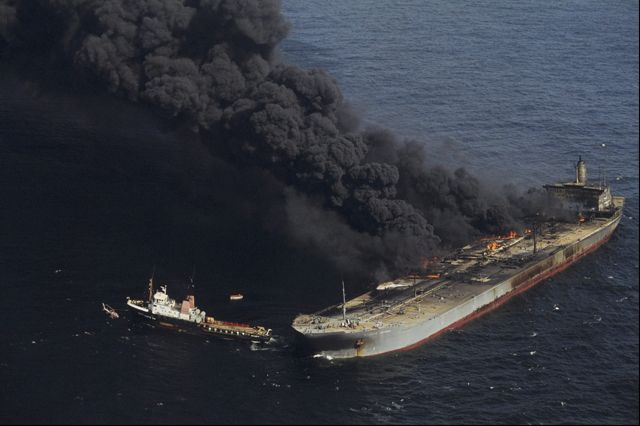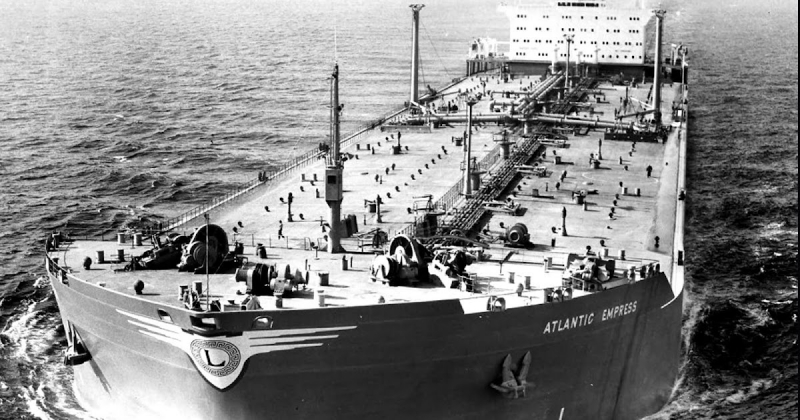The Atlantic Empress Oil Spill (1979)

Greek oil tanker SS Atlantic Empress collided with Aegean Captain in the Caribbean in 1979, causing the fifth-biggest oil leak in history and the largest ship-based catastrophe, which released 287,000 metric tonnes of crude oil into the Caribbean Sea. The tanker finally sunk. On February 16, 1974, it was launched after being constructed at the Odense Staalskibsvaerft shipyard in Odense, Denmark.
The greatest tanker spill in history occurred on July 19, 1979, when the VLCCs Atlantic Empress and Aegean Captain collided during a tropical storm. The Atlantic Empress took the brunt of the collision even though both ships caught fire and the fire sparked an oil slick. After being pulled away from land, the Atlantic Empress burned for two weeks before sinking. On the other hand, the Aegean Captain's fire was put out, and the ship was towed to Trinidad. Despite the massive amount of oil spilled during the disaster, the beaches on neighboring islands suffered very little environmental harm; winds carried the majority of the oil out to sea, where it dispersed.
When the carriers caught fire, 27 crew men perished. After the accident, The Atlantic Empress's fire was uncontrollable, and it took over two weeks for it to sink. Despite the fact that the fire destroyed a substantial percentage of the oil shipment, a 30 by 60 mile slick was still clearly visible. It's impressive that no noticeable pollution made it to the coastlines of the adjacent islands. Despite this, the affected nations never conducted an impact study, and later, $30 million would be paid out in claims. The Atlantic Empress finally sank on August 3, 1979, after burning for two weeks.
When: 1979
Where: Caribbean Sea
Oil spilt: 88.3 million gallons











